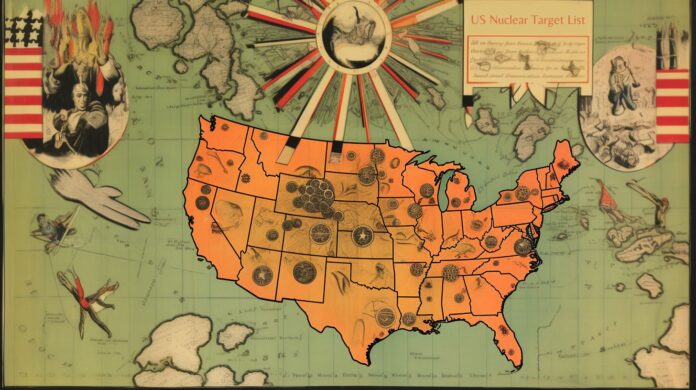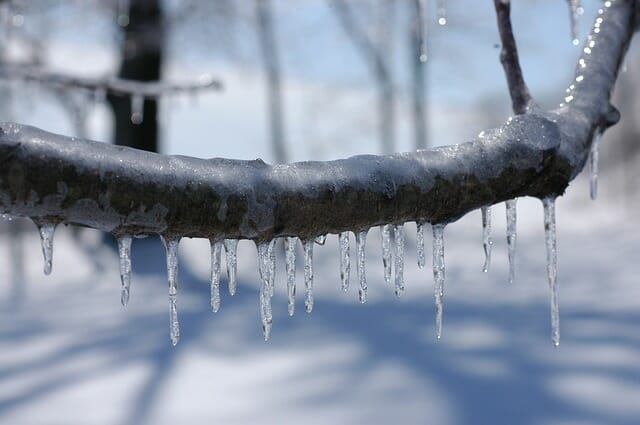When Joseph Biden was sworn in on January 20, 2021, as the 46th President of the United States, he inherited several significant crises from the previous governments, including the escalating climate change, raging pandemic, an attempted coup by the predecessor, and the ongoing fear among Americans regarding the power of nuclear weapons during the cold war.
Immediately after his inauguration, President Biden gained official control of nuclear weapons, including the bombs.
However, handling the issues revolving around nuclear weapons during the cold war and NATO becomes challenging.
Additionally, the situation in Ukraine adds further complexity.
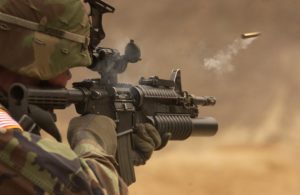
Despite that, the United States, along with NATO and the UK, receives several nuclear threats from nations such as Russia, China, and North Korea which hold a more significant percentage of the world's nuclear weapons. In response, war shelters have been established to protect citizens.
Most of the United State's nuclear target destinations, including the UK, have been identified by considering strategic assets such as war, maps, and shelters.
-
Overpopulated states.
-
Military bases.
-
Depots for military ammunition.
-
States with major industries that can contribute to economic decline if destroyed by nuclear attacks, including shelters, the UK, and Redlener.
-
States with significant infrastructure facilities include water reservoirs, power plants, nuclear forces, and information technology systems.
The US nuclear target list
There are several locations in the U.S. listed in the nuclear target map as potential zones for nuclear strikes, and they include:
-
Fort Ritchie in Maryland
-
Camp David.
-
The pentagon.
Camp David and the Pentagon are the first and most apparent nuclear target zones. In particular, these locations are highly targeted because they house numerous pieces of government equipment and information that the U.S. can rely on in a global war.
When it comes to Jim Creek, it appears in the FEMA map of likely nuclear targets because it plays a critical role in the U.S. security system.

The Naval Radio station houses a low-frequency radio transmitter that the United States Navy depends on to transmit communication orders to the submarines of the U.S. that operate in the Pacific.
Therefore, eliminating naval radio stations could prevent or inhibit the U.S. Navy missiles submarines from receiving commands of returning fire in case of a nuclear strike.
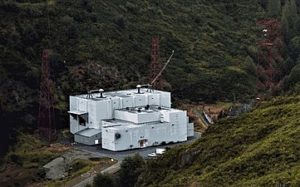
The federal government has also identified Washington DC, San Francisco, Los Angeles, Houston, Chicago, and New York as most likely to be targeted for nuclear attacks.
These states are not only the largest and densest cities in the United States, but they also have critical infrastructures such as major financial hubs, energy plants, wireless transmission systems, and government facilities that are essential to the country's security.
For instance, Washington DC is also a potential target because it serves as the central command center for the U.S.
Other major potential nuclear target areas include states with military, naval, and air force bases such as:
The Naval Station Norfolk- is one of the largest global naval bases, which is located in South-Eastern Virginia.
Although the base was established more than 100 years ago, it currently houses more than 150 000 personnel, including the Department of Defense soldiers, reservists, family members, and dependents.
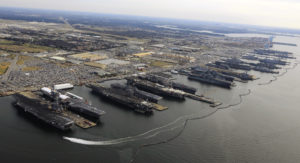
San Diego, California- It is one of the states with the largest bases for the U.S. Navy. It is also one of the Pacific fleet's major home ports, with approximately 50 ships with more than 120 tenant commands.
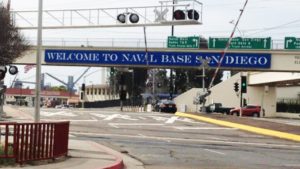
Seattle, Washington- Seattle is also one of the nuclear targets in the U.S. because it hosts several navy bases.
Arguably, the Naval Station in Bremerton and the Naval submarine base in Bangor merged to form the third-largest navy base in the United States known as Naval Base Kitsap.
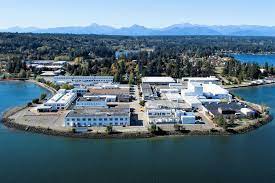
The naval base supports fleet ballistic missiles, surface ships, and other nuclear weapons.
Los Alamos National Laboratory- The laboratory is the primary local for nuclear bomb design in the U.S., located in Santa Fe, New Mexico.
Although there are other labs, Los Alamos is the target because if the pillar of bomb design and hosts the world's most famous scientists.
Joint Base San Antonio- It is a military located in Texas and is under the Air Force base wing jurisdiction. It is also a joint base for Martindale Army Airfield, Lackland Air Force, and U.S. Army Fort Sam Houston.
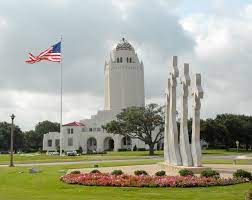
Fort Bragg- It is the home of the United States special forces and airborne forces, U.S. Army Reserve Command, and Army Forces command in Fayetteville, North Caroline.
Kansas City National Security campus- It is a facility that produces approximately 85 percent of nuclear components used in the U.S. nuclear weapon arsenal.
Cheyenne Mountain in Colorado Springs- Cheyenne Mountain serves as a center for military communications.
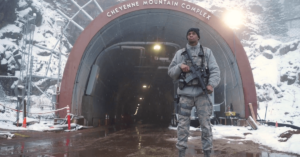
Offutt Air Force Base in Omaha, Nebraska- It serves as the headquarters for the air force weather agency and U.S. Strategic Command.
According to the FEMA map of likely nuclear targets, the most active nuclear power plants in the United States are also included. Some of such plants include:
The Safest States from nuclear attack
The United States is not completely safe, but it only has safer places for nuclear targets.
The areas that are considered the safest states from nuclear attack include Salem, Oregon, which has invested in bolstered seismic infrastructure facilities that can mitigate damages from nuclear damage.
Further, states that do not have nuclear power plants, such as Northern California, West Virginia, Minnesota, Connecticut, Massachusetts, Illinois, Rhode Island, and Minnesota, are considered safer.

The least populated states in the U.S. also have a limited likelihood of attacks. Such states include Alaska, Vermont, North and South Dakota, Delaware, and Wyoming.
However, it does not mean that you will be safe from nuclear attacks if you live in a sparsely populated area. All you have to consider is the assets which are a considerable target.
Maine is also one of the safest places because it has fewer violent crimes, low natural disaster risks, and no nuclear bases nearby.

Most of America's top states are at larger risk because they host the country's most vital systems, firms, and components, making them a target for nuclear attacks.
In most cases, the federal government considers states with energy centers, refineries, ports, densely populated areas, airfields, and military bases as potential nuclear targets.
Since most of the states in the U.S. have a risk of a nuclear target, the Biden administration should look for ways of maintaining national security.
For instance, the administration should try to fulfill its campaign promise of extending the New Strategic Arms Reduction Treaty, the only remaining arms control treaty with the Russian government that expired in early 2021. The treaty can also improve the perilous relations between Russia and the U.S.
Such a model can also serve as means for dialogues with other nuclear-armed nations, including North Korea and China. Perhaps, through that, the new government can guarantee the states' safety in the nuclear target list.
Did you know that behind closed doors, a secret document outlines potential targets for nuclear strikes?
It's called the US Nuclear Target List, and it plays a vital role in our national security and military planning.
This classified compilation identifies strategic locations that could be hit if a nuclear conflict arose.
The US Nuclear Target List is not just an ordinary slideshow of potential targets; it represents a comprehensive effort by experts to identify key sites that may impact the outcome of such an unimaginable event.
While we hope these targets never become anything more than hypothetical scenarios, their inclusion in this list demonstrates the gravity of preparing for worst-case scenarios.
As a member of the public, accessing this information is impossible. The US Nuclear Target List remains shrouded in secrecy, only accessible to those entrusted with protecting our nation.
Nevertheless, understanding its existence allows us to appreciate the immense responsibility placed on our military forces each day.
So let's delve into this enigmatic list and explore its significance within our nation's defense strategy.
Understanding the Relationship Between Nuclear Targets, Radioactive Fallout, and Weather Patterns:
The Impact of Weather on Radioactive Fallout
Weather patterns are crucial in determining the spread of radioactive fallout from nuclear targets.
When a nuclear event occurs, such as an attack or accident, understanding these weather patterns becomes essential in assessing the potential impact.
Wind Direction: A Key Factor
One of the primary factors influenced by weather is wind direction. The wind's direction can significantly affect how far radioactive fallout will travel. If the wind blows toward populated areas or bodies of water, it can lead to widespread contamination.
For example:
-
If a nuclear target is located upwind from a major city, there is a higher risk of fallout reaching that area.
-
Conversely, the impact may be less severe if the wind blows away from densely populated regions.
Wind Speed: Determining Fallout Spread
Another critical factor influenced by weather patterns is wind speed. The speed at which winds blow can determine how quickly and far radioactive particles disperse.
Stronger winds tend to carry fallout particles over longer distances.
Consider this:
-
In cases where winds are calm or light, the fallout may settle closer to the site of the nuclear event.
-
However, the fallout can be carried hundreds or even thousands of miles away during high-speed winds or storms.
Assessing Potential Impact
Understanding both wind direction and speed allows experts to assess the potential impact of a nuclear attack accurately.
By analyzing historical weather data and utilizing advanced models, they can predict where radioactive fallout might spread based on different scenarios.
Some key points include:
-
Meteorological data plays a vital role in predicting potential paths for fallout dispersion.
-
Advanced computer simulations help simulate various scenarios based on different weather conditions.
-
Experts consider factors like topography and atmospheric stability when assessing potential impacts.
By considering all these elements together, authorities can develop evacuation plans and implement measures to minimize the impact of radioactive fallout on affected areas.
Analysis of Nuclear Targets, Radioactive Fallout, and Weather Patterns
Identifying High-Risk Areas for Radioactive Contamination
One crucial aspect that military strategists must consider is the selection of targets.
Detailed analysis helps identify areas at risk of significant radioactive contamination during an attack.
By understanding the factors contributing to fallout dispersion patterns, experts can better prepare for emergencies and mitigate the potential harm caused by nuclear explosions.
Factors Considered in Target Selection
Choosing nuclear targets involves a careful evaluation of various factors.
Population density plays a crucial role as densely populated areas are more likely to experience severe consequences due to higher casualties and increased strain on emergency response systems.
Proximity to water sources is considered since water bodies can aid in spreading radioactive particles over larger areas.
Military planners also consider strategic locations such as major cities or industrial centers with military installations or critical infrastructure.
These targets hold significant value due to their potential impact on national security and economic stability.
However, it's important to note that this listicle does not endorse or promote any form of violence or aggression; instead, it aims to provide insights into the considerations involved in target selection.
Predicting Fallout Dispersion Patterns
Sophisticated modeling techniques are vital in predicting how radioactive fallout will disperse after a nuclear explosion.
By analyzing weather patterns and local meteorological conditions, experts can estimate where the particles are likely to travel and settle.
This information is crucial for emergency planning as it allows authorities to allocate resources effectively and promptly evacuate potentially affected areas.
Weather patterns significantly influence the dispersion of radioactive fallout. Wind direction and speed determine how far particles will travel from ground zero. For example:
-
These locations could face heightened risks if prevailing winds blow towards densely populated regions or agricultural areas.
-
Conversely, the impact may be less severe if winds carry fallout away from heavily populated areas or towards less inhabited regions.
Understanding local weather conditions is essential in assessing the potential risks associated with specific target locations.
Experts can simulate various scenarios to better prepare for potential fallout dispersion patterns by analyzing historical data and using advanced modeling techniques.
States Included in the US Nuclear Target List:
The United States Nuclear Target List includes various states across the country.
The US Nuclear Target List is a comprehensive compilation of states within the United States that are considered strategically important or pose potential threats.
This list encompasses coastal and inland states, highlighting the diverse range of locations deemed significant in terms of military operations and national security.
Coastal and inland states are included due to their strategic importance.
Geographical location plays a crucial role. Coastal states are often prioritized due to their proximity to major waterways and ports, vital for trade and transportation.
Inland states, on the other hand, may be selected based on factors such as population density, natural resources, or key infrastructure.
Each state's inclusion on the list is based on its military significance or potential threat level.
The process of selecting states for the US Nuclear Target List involves careful consideration of various factors.
Military significance is one primary criterion; those states with significant military installations or bases tend to be included due to their potential role in defense strategies or offensive capabilities.
Certain states may pose a higher threat level due to factors such as political instability, regional conflicts, or historical tensions.
To provide some insights into specific examples:
-
California: As a coastal state with numerous military bases and defense industries, California holds great military significance. It houses major naval facilities like Naval Base San Diego and Naval Air Station Lemoore.
-
Texas: With its vast land area and multiple air force bases like Joint Base San Antonio-Lackland and Sheppard Air Force Base, Texas has long been recognized for its contributions to national defense.
-
New York: Being home to critical economic centers like Wall Street and hosting key international organizations like the United Nations headquarters makes New York an attractive target for adversaries seeking to disrupt the nation's financial and political stability.
It is essential to note that the US Nuclear Target List is continually reviewed and updated based on evolving geopolitical dynamics, emerging threats, and advancements in military technology.
Including states on this list reflects the government's commitment to safeguarding national security interests while ensuring preparedness for potential conflicts or emergencies.
Potential Landing Sites for Nuclear Weapons:
In the grim world of nuclear warfare, potential landing sites are areas within US territory that enemy missiles could target. These locations are carefully evaluated to assess their vulnerability and the possible consequences of a nuclear attack.
Assessing Vulnerability
Assessing vulnerability is crucial. A comprehensive evaluation helps us identify potential landing sites that adversaries might target to inflict maximum damage.
Understanding these vulnerabilities allows us to take necessary precautions to deter such attacks and protect our citizens.
Major Cities
One primary consideration when identifying potential landing sites is major cities across the United States. These urban centers not only house a significant portion of our population but also serve as economic hubs and centers of political power.
Targeting major cities would aim to cripple our society and disrupt everyday life on a massive scale.
Examples:
-
New York City
-
Los Angeles
-
Chicago
-
Houston
-
Washington D.C.
Military Bases
Another crucial aspect considered is the presence of military bases within US territory.
These installations are vital in maintaining national security and projecting military power worldwide.
By targeting military bases with nuclear weapons, adversaries aim to weaken our defense capabilities and hinder our ability to respond effectively.
Examples:
-
Fort Bragg in North Carolina
-
Naval Station Norfolk in Virginia
-
Joint Base Lewis-McChord in Washington State
-
Fort Hood in Texas
-
Marine Corps Base Camp Pendleton in California
Critical Infrastructure
The third key consideration revolves around critical infrastructure that sustains our daily lives and ensures the functioning of essential services.
Disrupting these systems through a nuclear attack can have catastrophic consequences for both immediate casualties and long-term recovery.
Cities Included in the US Nuclear Target List (beyond commonly known targets):
The Significance of Lesser-Known Population Centers
When we think about cities included in the US nuclear target list, our minds often jump to major urban centers like New York City or Washington D.C.
However, it's important to recognize that other population centers across the country also feature on this list.
These cities may not be as widely known but possess significant military installations or serve as regional hubs for transportation and communication networks.
Regional Hubs: The Backbone of Defense Strategy
The inclusion of these lesser-known cities highlights their crucial role in national defense strategy. While they may not have the same global recognition as New York City or Los Angeles, they play a vital part in ensuring the security and stability of our nation.
Let's take a closer look at some of these cities:
-
San Francisco: Known for its iconic Golden Gate Bridge and vibrant tech industry, San Francisco is more than just a tourist destination. This city is home to various military installations and serves as an important port for naval operations on the West Coast.
-
Chicago: Situated in the heartland of America, Chicago is a bustling metropolis and a key transportation hub connecting different regions of the country. Its strategic location makes it an essential component of our national defense infrastructure.
-
Houston: As one of the largest cities in Texas, Houston boasts a thriving energy sector and is home to NASA's Johnson Space Center. Its inclusion on the nuclear target list reflects its significance as both an economic powerhouse and a center for space exploration.
-
Atlanta: Serving as a major transportation hub with one of the busiest airports in the world, Atlanta plays a critical role in connecting people and goods across different parts of the United States. Its inclusion underscores its importance within our national communication network.
-
Seattle: Nestled in the Pacific Northwest, Seattle is known for its stunning landscapes and as the birthplace of tech giants like Microsoft and Amazon.
However, it also houses important military facilities and serves as a strategic port for regional naval operations.
These are just a few examples of cities that feature on the US nuclear target list beyond the commonly known targets. Recognizing that national defense strategy extends beyond well-known population centers is essential.
These lesser-known cities contribute significantly to our country's security by virtue of their military installations, regional connectivity, and economic importance.
Declassified US Nuclear Targets and International Lists:
Historical Insights into Nuclear Target Lists
Declassified documents offer us a glimpse into the past, revealing valuable information about the historical nuclear target lists of the United States. These documents provide insights into military strategies and potential adversaries that were considered threats during different eras.
One of the key aspects revealed by these declassified documents is the existence of international target lists. These lists outline targets in other countries that could potentially be subjected to nuclear strikes. Let's delve deeper into this intriguing subject.
The Importance of International Target Lists
-
NATO Targets: As part of its defense strategy, the United States developed nuclear target lists in collaboration with NATO allies. These targets were carefully selected to neutralize threats from enemy forces or strategic locations within NATO member countries.
-
UK Collaboration: The United Kingdom also played a significant role in identifying and selecting targets for nuclear strikes. Through close cooperation with the US, they contributed to developing comprehensive target lists to safeguard both nations' interests during the conflict.
-
Insights from World War II: Historical nuclear target lists often draw upon experiences from World War II, where strategic bombings played a crucial role in shaping military tactics. By examining these declassified documents, we better understand how lessons learned from previous conflicts influenced subsequent strategies.
Shedding Light on Potential Adversaries
-
Russian Targets: Given the tense relationship between the US and Russia throughout history, it comes as no surprise that Russian targets featured prominently on American nuclear target lists. These declassified documents shed light on specific locations within Russia that were deemed critical for neutralization in case of an armed conflict.
-
Vladimir Putin's Russia: More recent updates to these target lists would likely reflect evolving geopolitical dynamics and emerging threats such as cyber warfare capabilities possessed by Vladimir Putin's Russia. While specific details may not be publicly available, it is reasonable to assume that potential targets have been updated accordingly.
Expert Perspectives and Claims
-
Redlener's Insights: Dr. Irwin Redlener, a renowned expert in disaster preparedness, has extensively studied nuclear target lists. He emphasizes the importance of understanding these documents to comprehend the potential consequences of a nuclear strike and develop effective emergency response plans.
-
Alex Wellerstein's Research: Historian Alex Wellerstein has extensively researched nuclear weapons and their historical context. His work provides valuable insights into the wrong-day scenario – a hypothetical situation where an accidental nuclear launch occurs due to miscommunication or technical failure.
The Complexity of Nuclear Target Lists
-
Vast Amount of Information: Creating comprehensive nuclear target lists involves analyzing vast amounts of information, including military installations, key infrastructure, and population centers that could impact an adversary's capabilities or morale.
-
Consideration for People: While military targets are crucial, declassified documents also reveal considerations for minimizing civilian casualties during a potential conflict. These documents highlight efforts made by strategists to strike a balance between neutralizing threats and protecting innocent lives.
Key Takeaways from the US Nuclear Target List:
The US Nuclear Target List provides crucial information about potential targets, fallout patterns, and international implications. Understanding the relationship between these factors is essential in comprehending the significance of this list.
1. Understanding the Relationship Between Nuclear Targets, Radioactive Fallout, and Weather Patterns:
The US Nuclear Target List takes into account various factors such as population centers, military installations, and strategic locations. It considers how radioactive fallout may spread based on prevailing weather patterns to assess potential risks and impacts.
2. Analysis of Nuclear Targets, Radioactive Fallout, and Weather Patterns:
Experts can better evaluate potential consequences in different regions by analyzing the list's data on nuclear targets alongside knowledge of radioactive fallout dispersion and weather patterns. This analysis aids in emergency preparedness and response planning.
3. States Included in the US Nuclear Target List:
The list encompasses various states across the United States that are considered potential targets for nuclear attacks or retaliatory strikes. These states play critical roles due to their military bases, economic significance, or political importance.
4. Potential Landing Sites for Nuclear Weapons:
Understanding potential landing sites for nuclear weapons is crucial for assessing both offensive capabilities and defensive strategies. The US Nuclear Target List highlights areas that could be targeted during a conflict scenario.
5. Cities Included in the US Nuclear Target List (beyond commonly known targets):
While well-known cities like Washington D.C., New York City, and Los Angeles are often associated with being primary targets on the list, there are numerous other cities included that may not receive as much attention but hold strategic importance.
6. Declassified US Nuclear Targets and International Lists:
Declassified information regarding past US nuclear target lists provides historical context while highlighting international concerns regarding nuclear warfare. Comparing these declassified lists with other countries offers valuable insights into global security dynamics.
In conclusion, the US Nuclear Target List offers critical insights into potential targets, fallout patterns, and international implications. By understanding the relationships between these elements, individuals can better comprehend the gravity of nuclear warfare and its potential consequences. It is crucial to remain informed about such matters to foster discussions on disarmament, non-proliferation efforts, and global security.
FAQs
What are some potential risks associated with the US Nuclear Target List?
The US Nuclear Target List highlights potential risks of nuclear attacks or retaliatory strikes in various states. Understanding these risks can help individuals and communities prepare for emergencies and develop appropriate response plans.
How does weather affect radioactive fallout dispersion?
Weather plays a significant role in determining how radioactive fallout disperses after a nuclear event. Wind patterns, precipitation levels, and atmospheric conditions all influence the direction and extent of fallout distribution.
Are there any specific cities on the US Nuclear Target List that are lesser-known but strategically important?
Yes, beyond commonly known targets like Washington D.C., New York City, and Los Angeles, numerous other cities are on the list that hold strategic importance due to factors such as military installations or economic significance.
How does comparing declassified US Nuclear Targets with international lists contribute to global security discussions?
Comparing declassified US Nuclear Targets with those of other countries provides valuable insights into global security dynamics. It highlights concerns regarding nuclear warfare among nations and fosters discussions on disarmament and non-proliferation efforts.
What actions can individuals take to promote disarmament efforts?
Individuals can support disarmament efforts by engaging in advocacy work, raising awareness about the dangers of nuclear weapons through educational initiatives, participating in peaceful protests or demonstrations, and supporting organizations dedicated to promoting peace worldwide.






